Almost 10 years later without a presence in the UEFA U21 Championship, Israel’s national team has finally qualified for a final phase in this competition. With six victories, three draws and three defeats, Guy Luzon’s side was second in the qualifying stage, right behind the powerful German team.
In a very difficult group with England and Germany as favourites, Israel have to be a very organised team, especially defensively, in order to overcome everyone’s expectations. In fact, as we will explore further on, Israel defends in a five-man line — and this kind of strategy could help them face these much stronger sides.
However, Israel are a team that believe in their offensive process no matter what team is playing on the other side. The Israeli collective always tries to build from the back, with good dynamics in the midfield as in the attack to misguide the opposition.
In this tactical analysis, we’ll provide an overview of Israel U21’s main tactics and processes both offensively and defensively. Through this analysis, we’ll also get you familiar with the main aspects of this team led by Guy Luzon.
Predicted starting XI
Offensively, identical to José Mourinho‘s AS Roma, Israel set up in a 3-5-2, with full-backs getting involved in the build-up by dropping deep. However, as soon as the defensive midfield link is made, they act as wingers. Additionally, as we are going to see, Arad Bar positions himself advanced on the pitch right behind the strikers, and there are situations where Israel’s formation is identical to a 3-4-3.
In defensive terms, both of the fullbacks join the backline, forming a five-man line. Additionally, Bar descends right near Yoav Hofmayster forming a line of three together with Ido Shahar. The two men at the front are also in the same line, all together Israel defend in a 5-3-2.
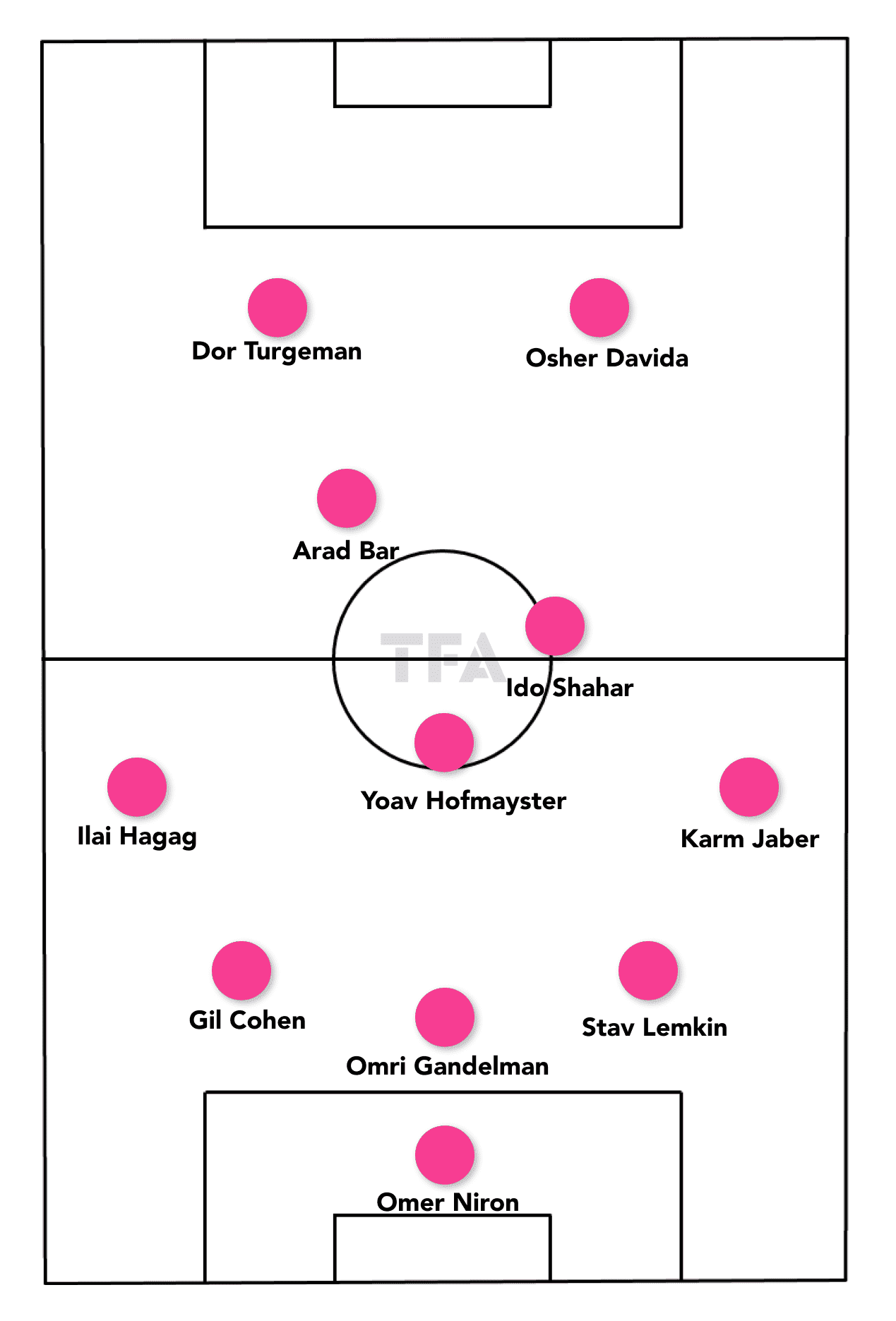
The defensive line will probably be composed of a right centre-back, Stav Lemkin, Omri Gandelman as the middle centre-back and Gil Cohen more on the left.
In the midfield, we foresee Yoav Hofmayster as the defensive midfielder with an important role in the build-up. Besides that, Ido Shahar who, in the way we see it, is the most outstanding player of this collective, will most likely occupy the right central midfield zone. Arad Bar is expected to play as a left central midfielder, more advanced on the pitch, as we’re going to see further in this scout report.
The two fullback positions will probably be occupied by Karm Jaber on the right and Ilai Hagag on the left. Finally, we anticipate that the two striker positions will be filled by Osher Davida and Dor Turgeman, who is being linked to Roger Schmidt‘s Benfica.
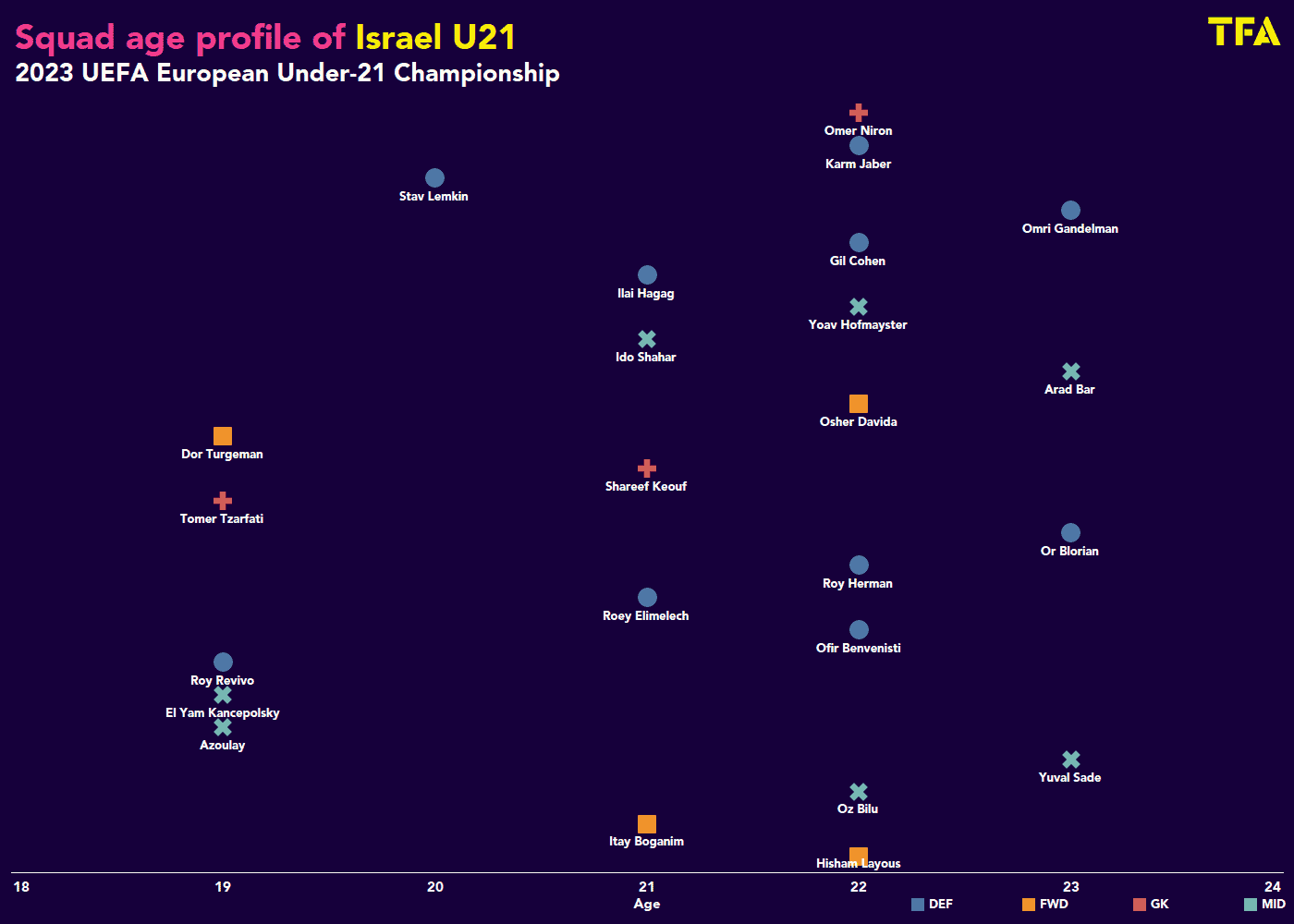
They are a relatively experienced team whereby the most common ages of the squad range between 21 and 23. This is a revealing sign of their maturity — something that can help them in overcoming their opponents, especially in decisive small details.
Attacking phase
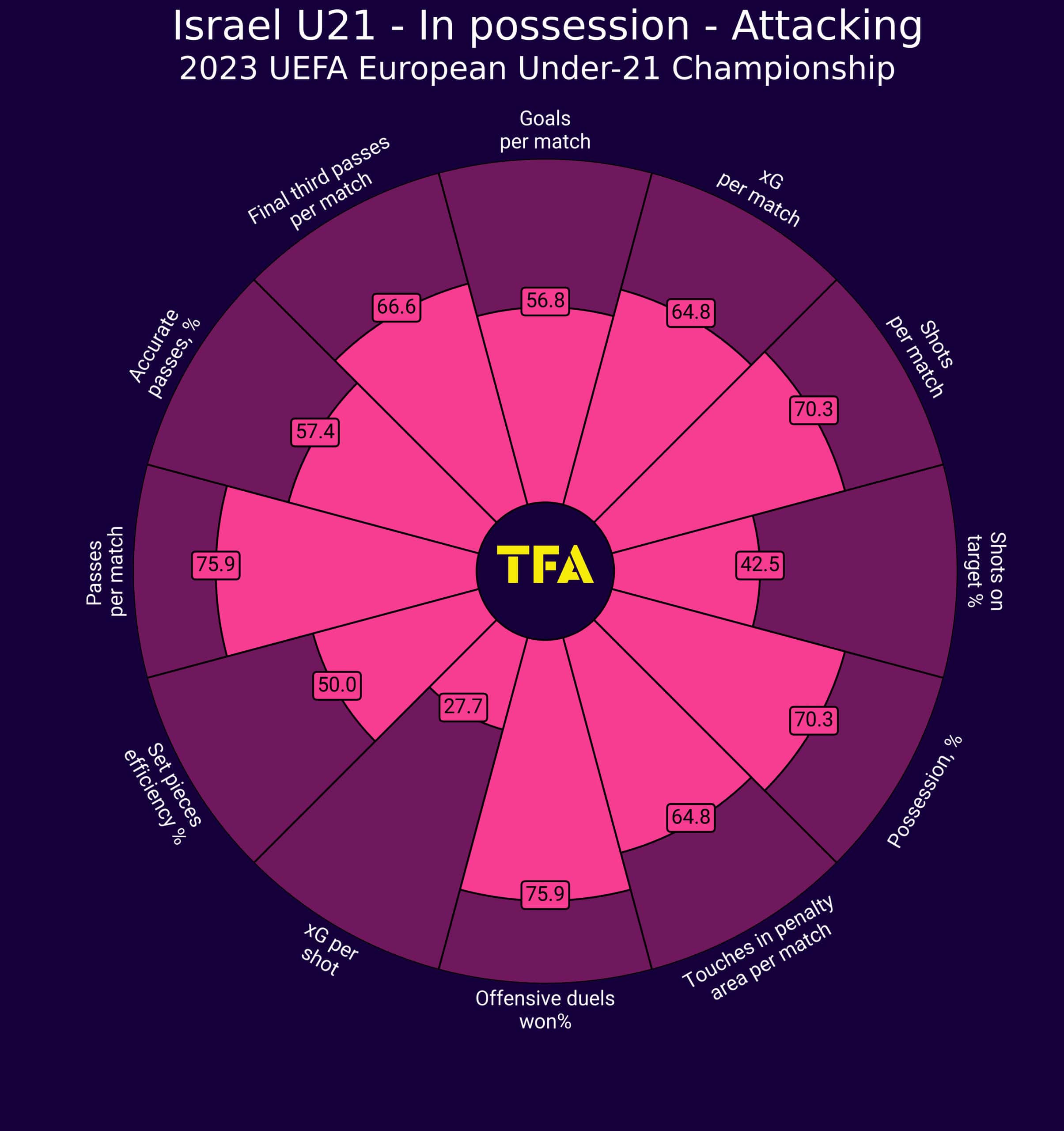
According to the data, Israel attempt a good portion of shots per match. However, they showed a lack of ability to consistently create high-value shots, ranking in the 27.7 percentile for xG per shot and in the 42.5 percentile in shot accuracy.
Israel feel comfortable having the ball, ranking in the 70.3 percentile for possession. Preferably, Israel like to build up from the back with the three centre-backs being the first participants in this process. In fact, as we can see in the image, they prefer to start building via the right side, mainly due to Stav Lemkin’s quality of processing and reading the game at this stage.
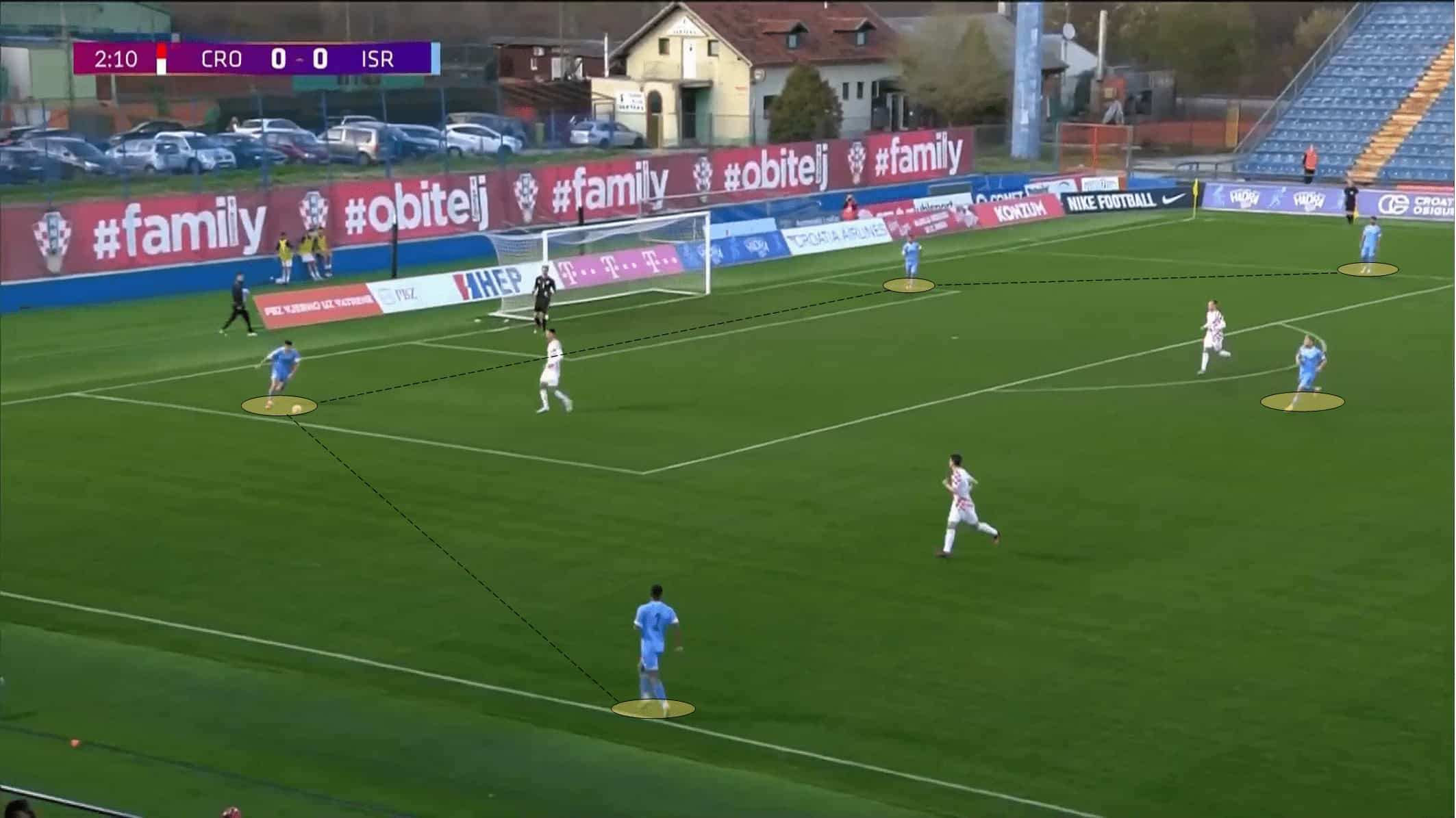
However, whenever they are pressed high, the team still show some difficulties in construction, missing passes in criminal zones of the pitch. The data indicates that they rank in the 57.4 percentile for pass accuracy, which is hardly very encouraging.
They are a team that like to involve their full-backs in the attack, and as it goes, they are wide-open and projected on the field as wingers. Offensively, they have special importance for creating solutions in the more exterior zones with a view in the box in order to cross to their well-positioned teammates.
However, they are also important in supporting the centre-back — for instance, both of the fullbacks drop down the pitch to assist the ball carrier.
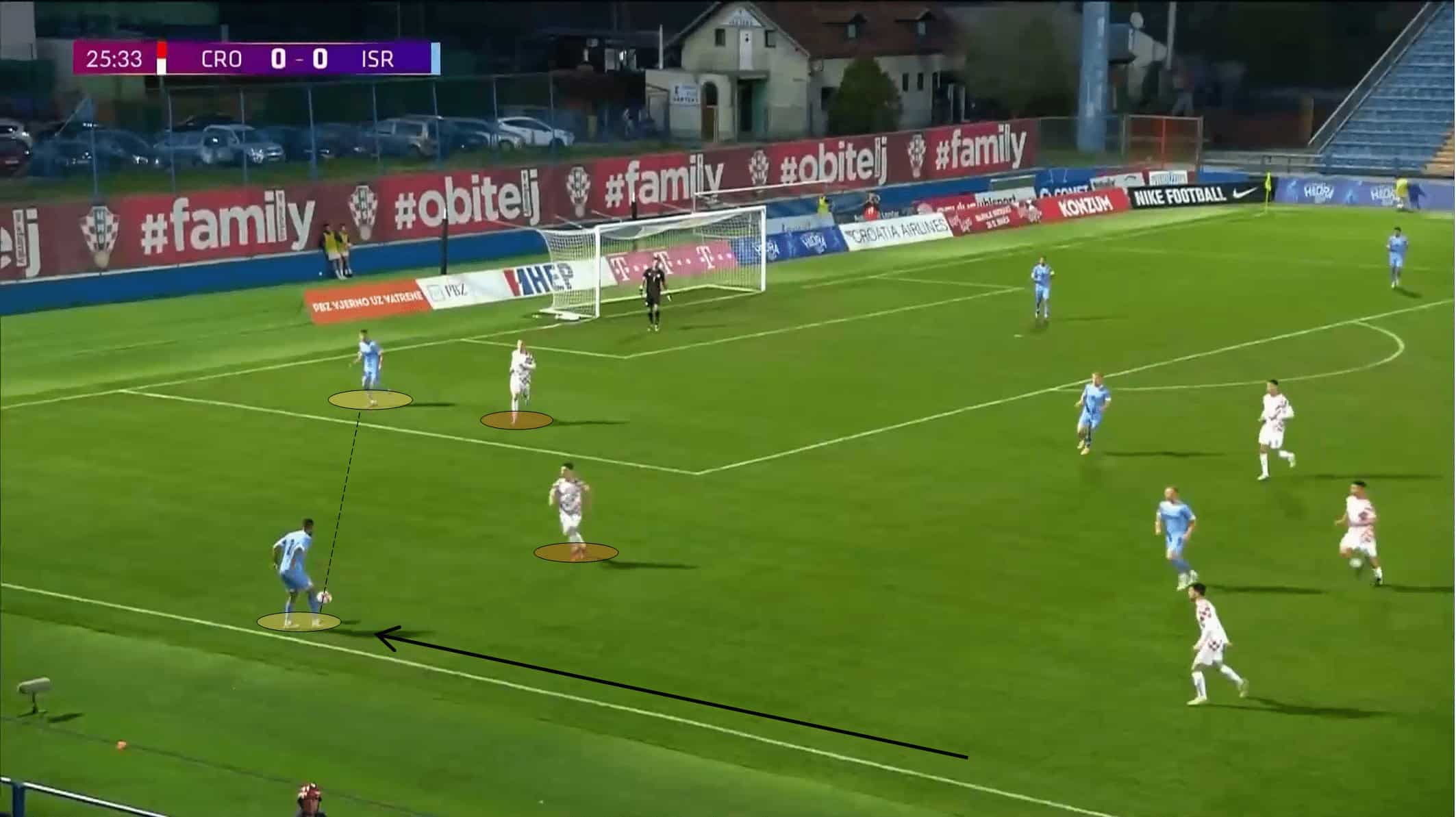
The strikers, initially, are positioned deep to lower the opposition’s backline, creating space between the lines for them to play.
In fact, both strikers can explore this free space right behind the opposition’s midfielder to give one more solution to the centre-back when he’s being pressed. The next image is a good example of that.
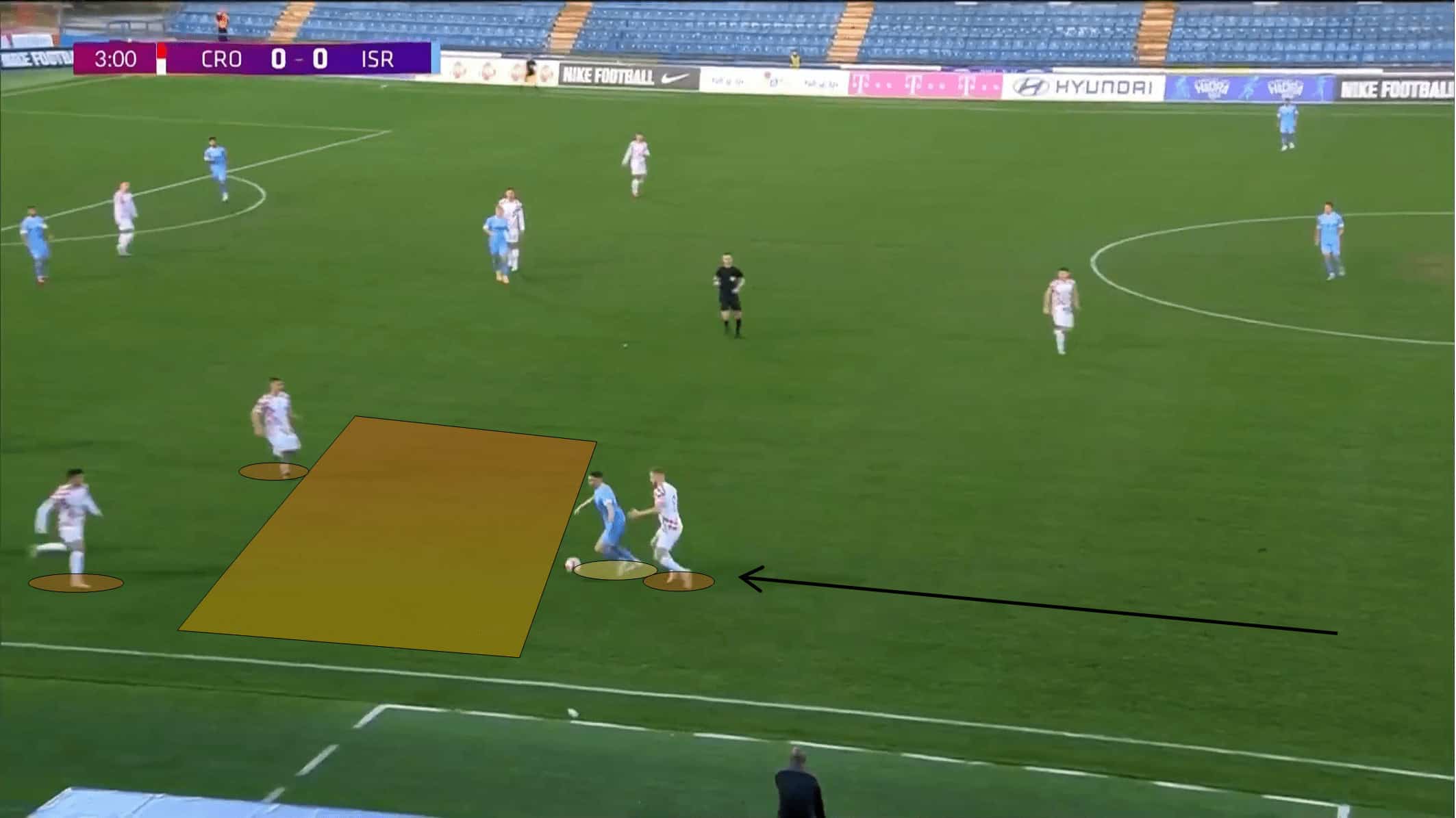
Besides that, the strikers also can force contact with the backline, seeking a more direct game — especially common with Dor Turgeman.
The link between the defenders and midfielders is also another alternative to be successful in the build-up, with Hofmayster and Shahar having a primary relevance.
In Luzon’s model, the midfielder who plays on the flank of the ball carrier tends to support him by dropping down the field. In this case, due to the fact that Israel builds preferentially by the right flank, it is natural that the centre-right midfielder (Shahar) is mostly near the defensive midfielder, supporting the ball carrier.

On the other side, as a consequence of the side on the ball circulation, the left central midfielder, a position normally played by Arad Bar, is usually positioned deep inside exploring the space between the lines created by the strikers.
In the image below, we can see a perfect example of when the right players occupy the right spaces, Israel can suddenly be in a position to harm the opposition.
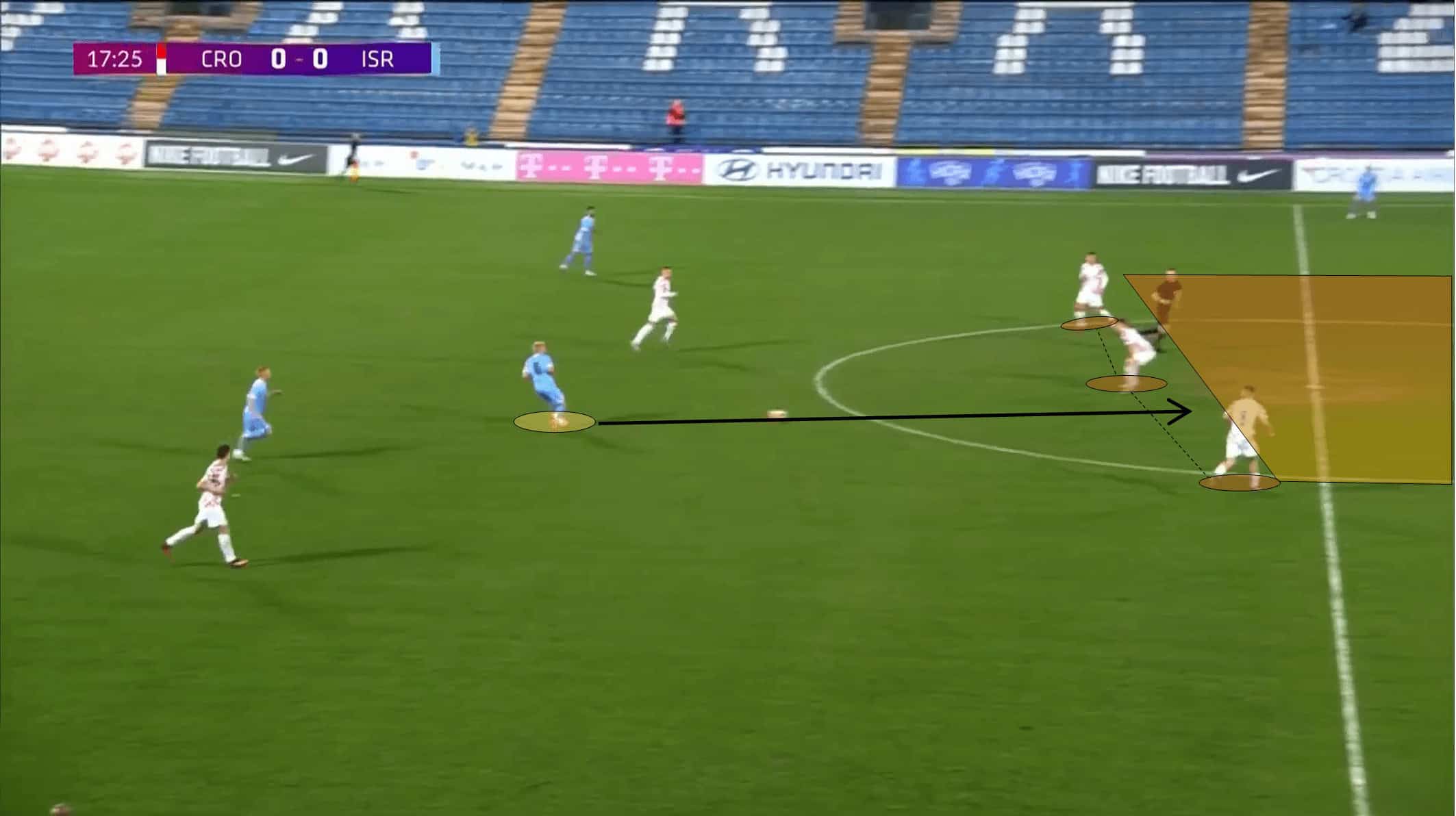
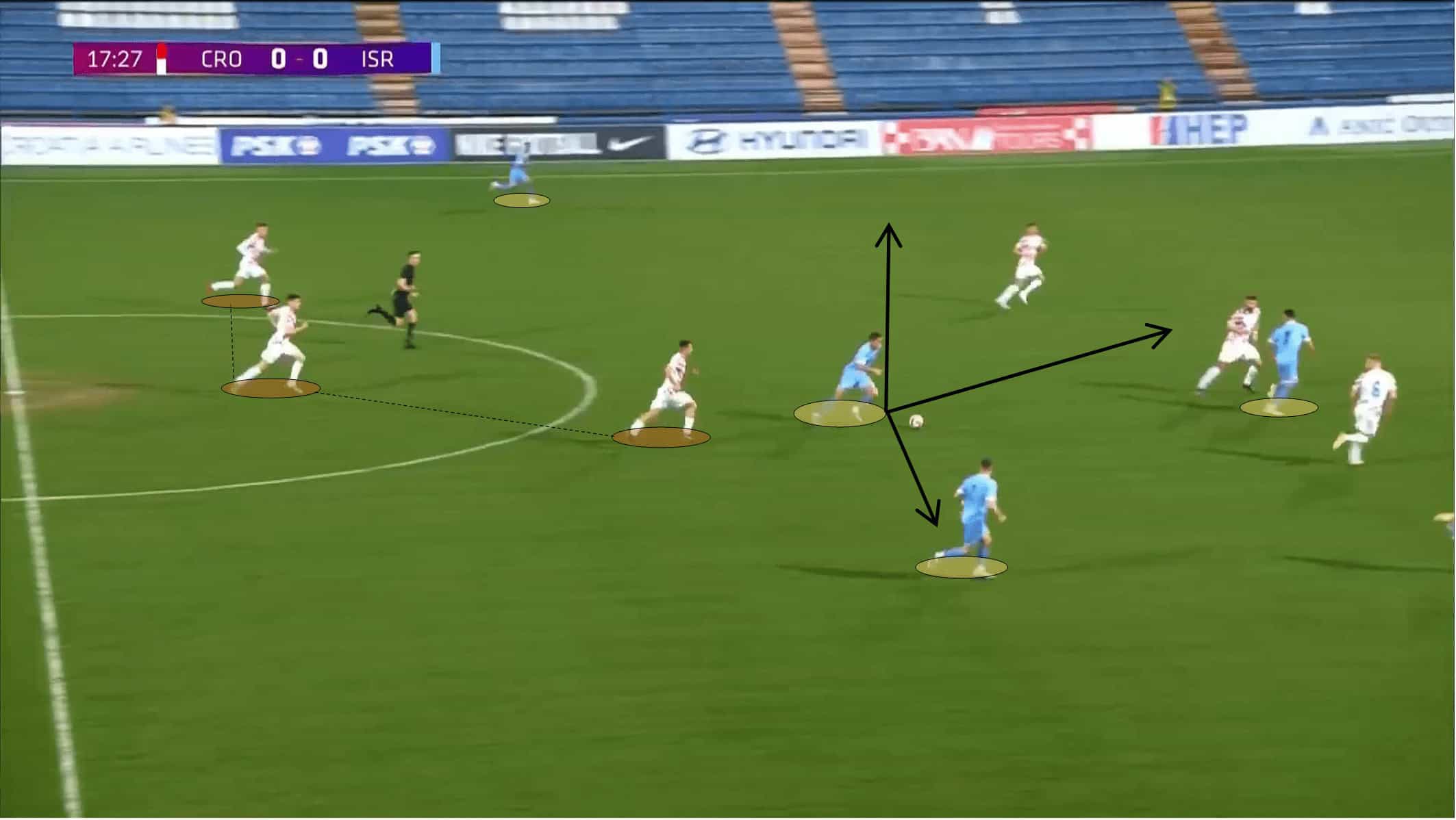
Due to his tactical understanding of occupying spaces, the 23-year-old midfielder seems to have more positional freedom and plays the offensive midfielder position.
However, as the image shows, when the ball carrier is the left centre-back, Bar descends to support and the opposite happens on the other flank, while Shahar explores more advanced territories.
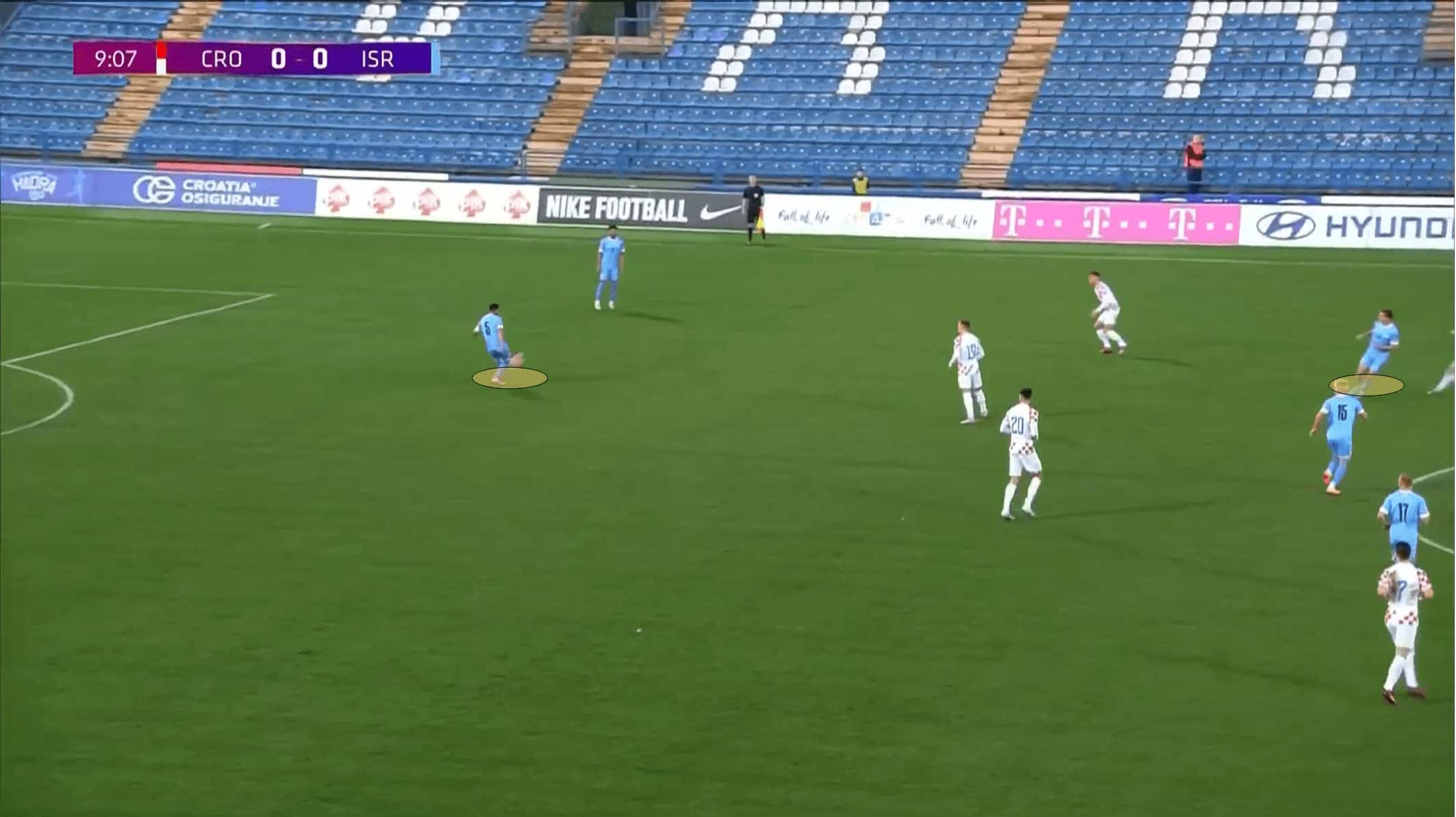
The Israeli U21s also show some mobility with alternating movements while in construction. For instance, when both of the midfielders are high on the pitch, the middle centre-back, normally Gil Cohen, occupies a zone right near the defensive midfielder.
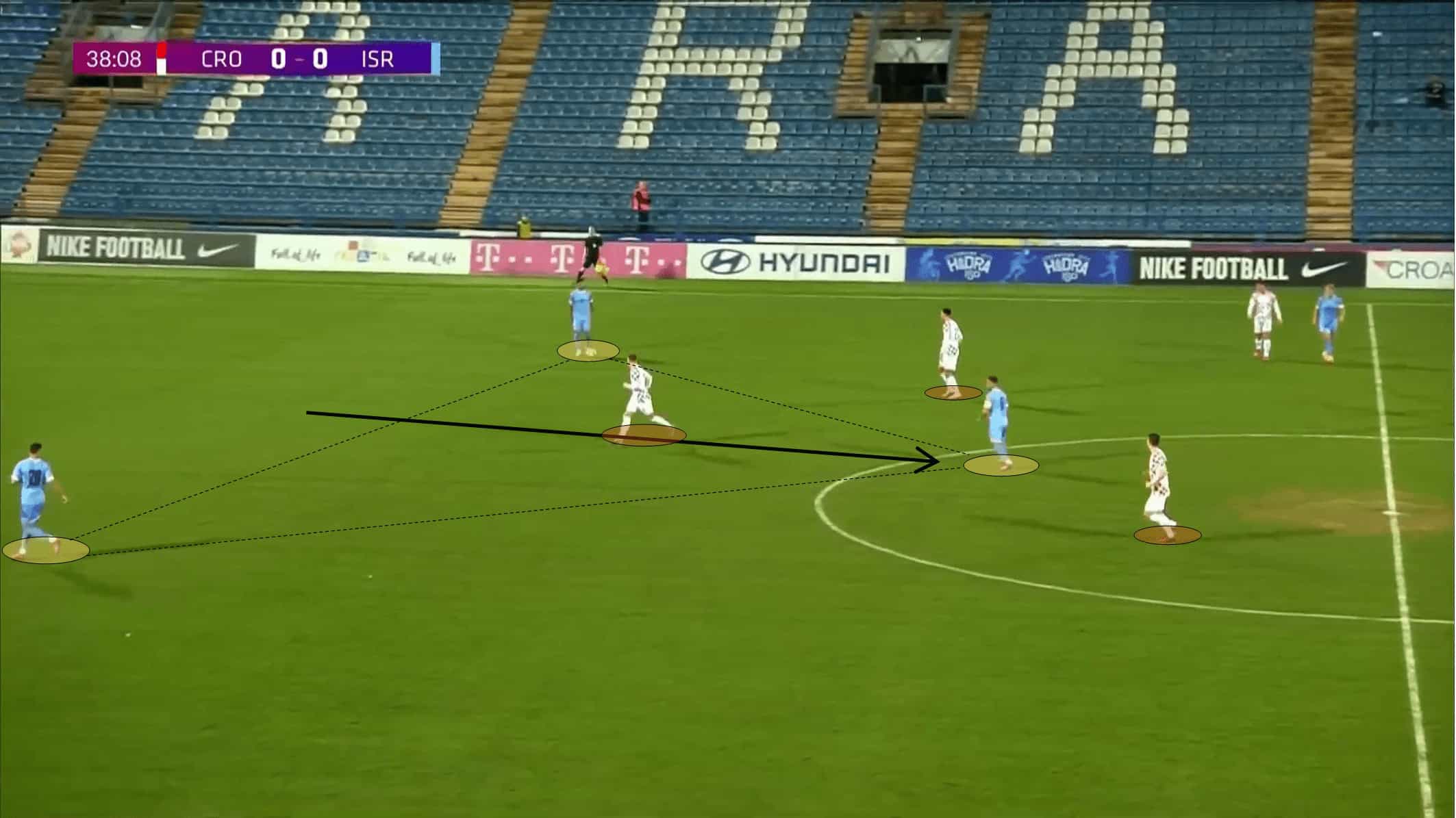
Besides that, due to Bar’s high positioning, the left back differs from his normal wide-open positioning and seeks the inside space.
Whenever Israel arrive at the end line, a process normally conducted by their fullbacks, the box is usually occupied by five men: two strikers, two midfielders and the opposite fullback.
Normally, the strikers attack the near post and the middle of the goal, the two midfielders are late runners occupying zones near the penalty spot and finally the fullback attacks the far post. In this image’s case, as the midfielder is taking the cross, the box is only occupied by four others.
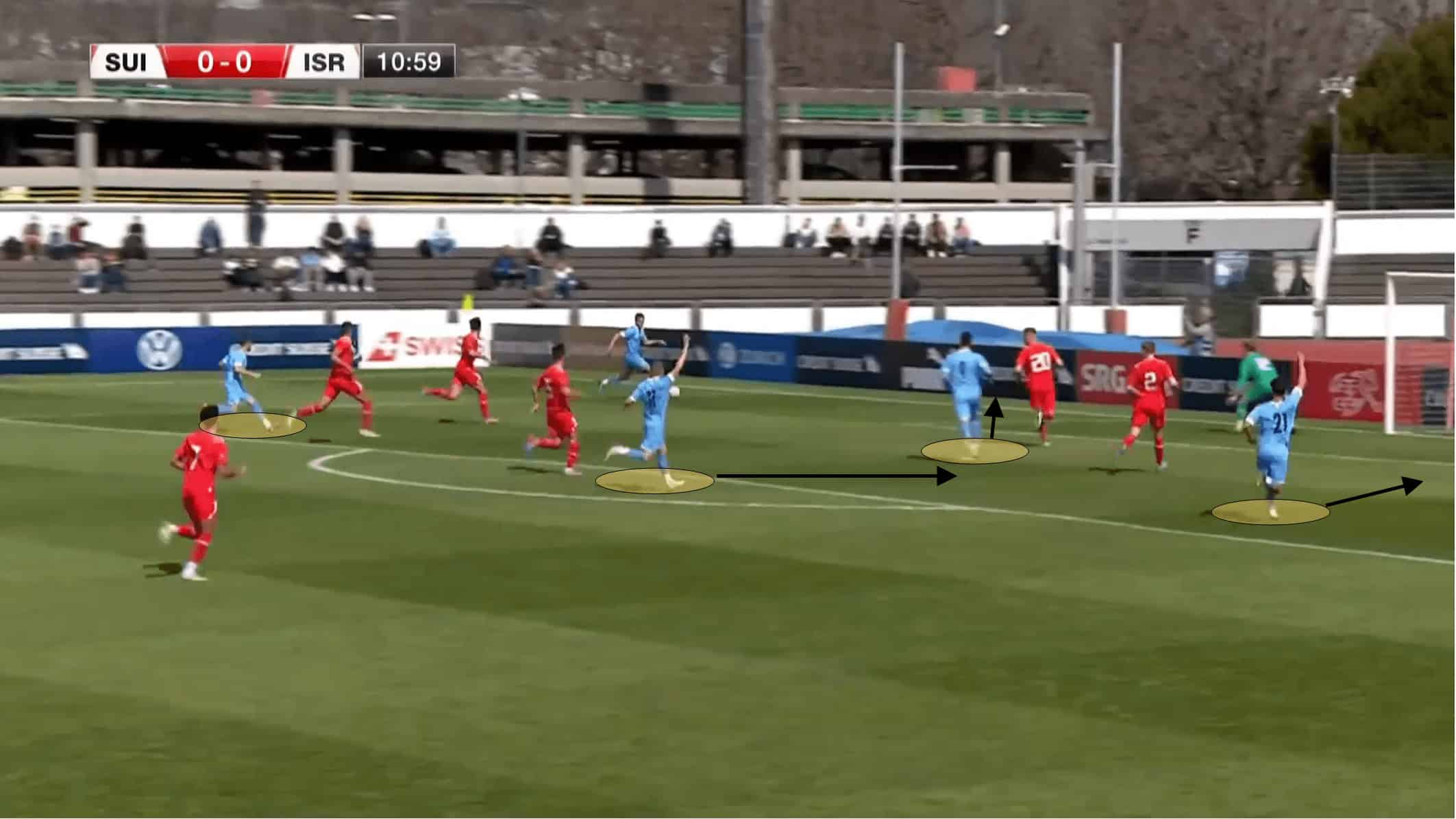
Defensive phase
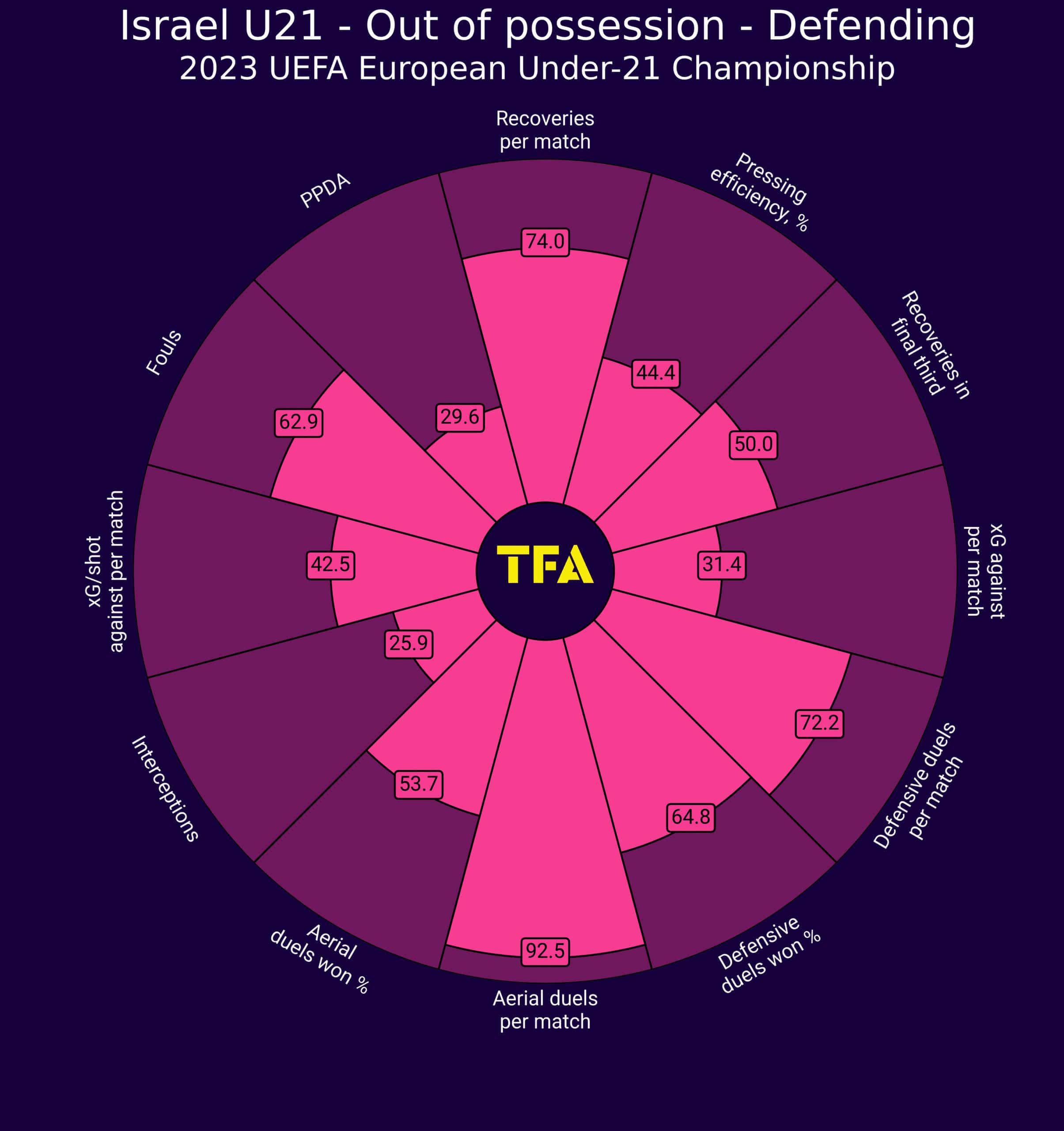
Without possession, Israel generally set up in a 5-3-2, where the fullbacks join the defensive line.
As we can see in the chart, they are a strong team in recovering possession — standing in the 74th percentile in recoveries per match — and the defensive midfielder, Hofmayster, due to his aggressiveness and physique, is one of the most important parts of this strength in their game.
In accordance with this level of aggressiveness, Israel rank in the 63rd percentile for fouls committed. In contrast to what happens in possession, Israel central midfielders Bar and Shahar defend in the same line.
Luzon’s side like to press in a medium-high block with the two strikers pressing the two centre-backs. However, when the opposition’s goalkeeper has the ball, both of the attackers act patiently and wait. In fact, the graph reveals a 29.6 percentile rank for PPDA, showing a relatively high-intensity level in pressing.
However, whenever they face a much stronger side, Israel recedes their pressing block and the team is more compact in order to be automatically less exposed.
Continuing with the pressing plan, the opposition’s fullback is pressed by the ball-near midfielder, while the remaining teammates mark the remaining opponents.
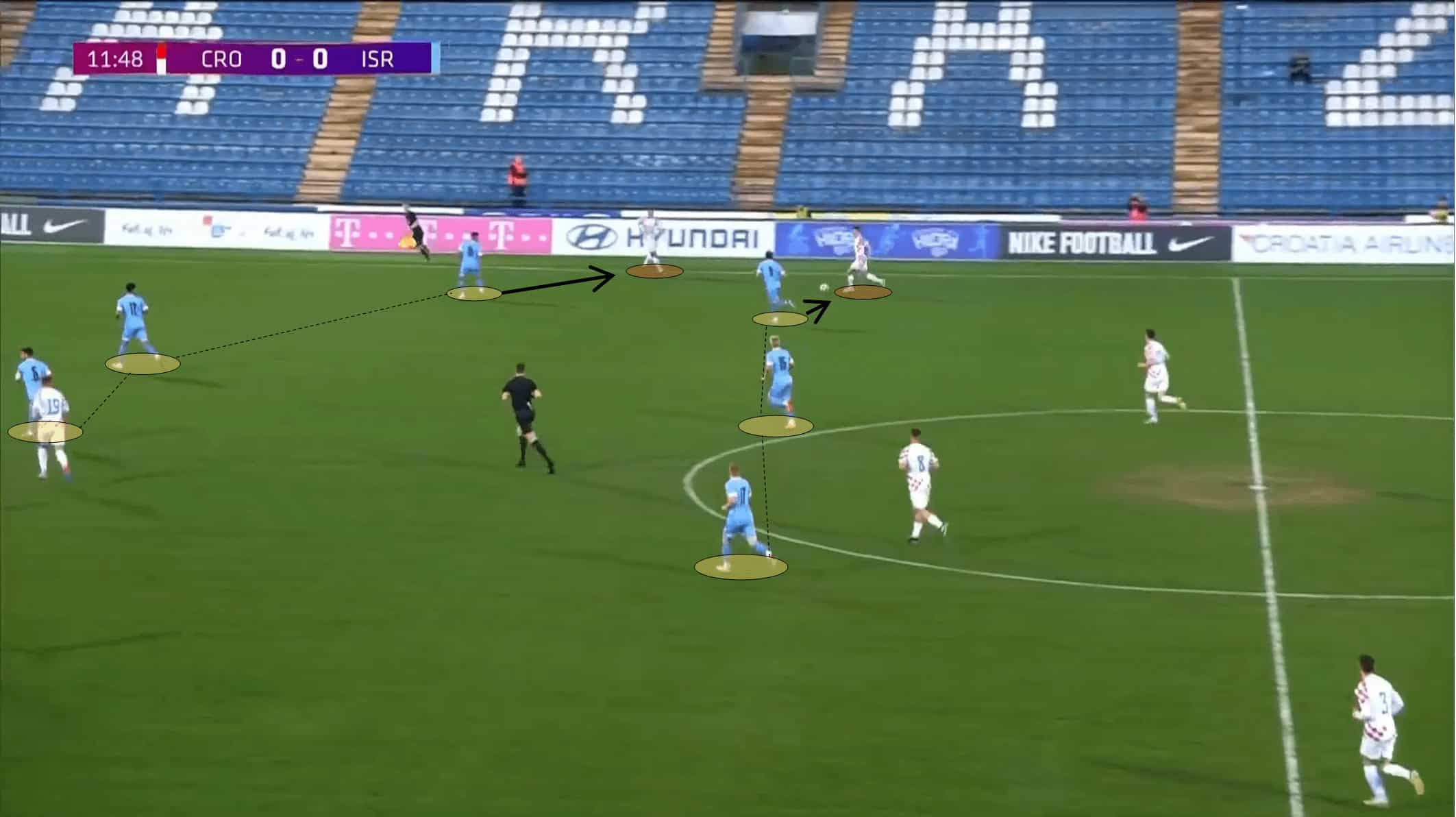
The fullbacks mark the corresponding winger, but it can happen that they press the opposition’s full-back when pressing indicators are present, such as aerial balls, bad passes and others.
This pressing plan has an overall positive effect, yet there are a few concerns related to it. For example, if the ball circulation of the opposition is fluid and quick, the fullback stays in numerical inferiority near the touchline (1v2) against the opposition’s winger and fullback.
This happens because the midfielder has no time to press both the midfielder and the fullback due to the high distance between them. Besides that, both the strikers show some difficulty in pressing whenever the opposition’s defensive midfielder descends to do a three-man build-up.
Luzon’s collective ranks in the 92.5 percentile in the number of aerial duels per match. This stat in addition to Israel’s priority on having the ball, reveals their unpredictability and versatility in possession.
Transitions
In our view, transitions are the phases of the game that Israel should work on the most, as we are going to specify below.
Although in the offensive organisation, playing with both of the fullbacks deep and open has significant advantages, it also has its risks. As a matter of fact, if the team lose possession in a more advanced zone, only the defensive midfielder and the three centre-backs are assuring their team’s defensive stability.
Besides that, there are cases where Israel’s defensive line is too high, and the offenders take advantage of that by seeking depth. Because the defenders are not too quick, they aren’t capable of correcting their own mistakes and consequently compromise their team.
In the image below, we can see an example of a failed defensive transition due to the reasons that we described and the resulting goal suffered.
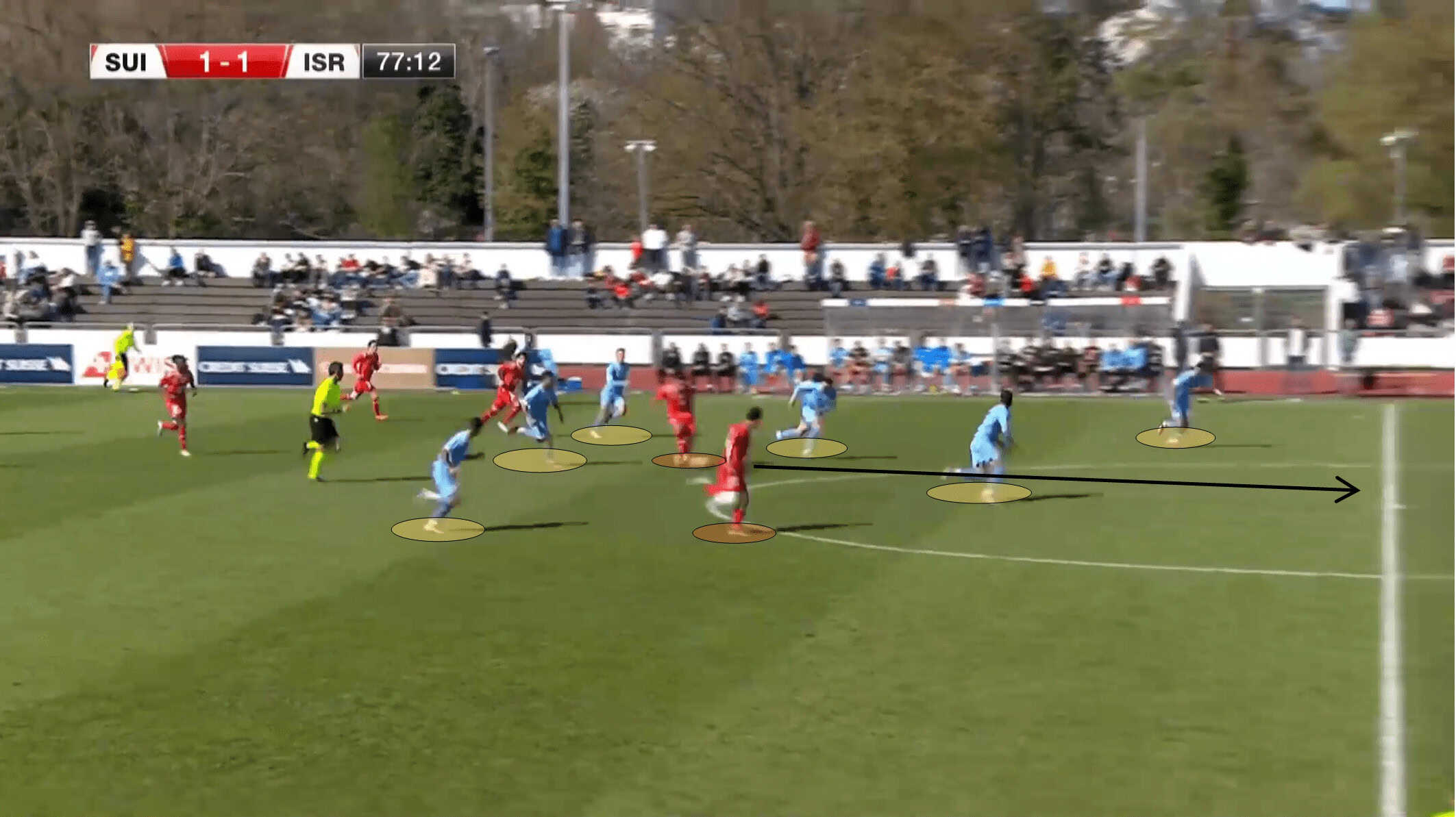
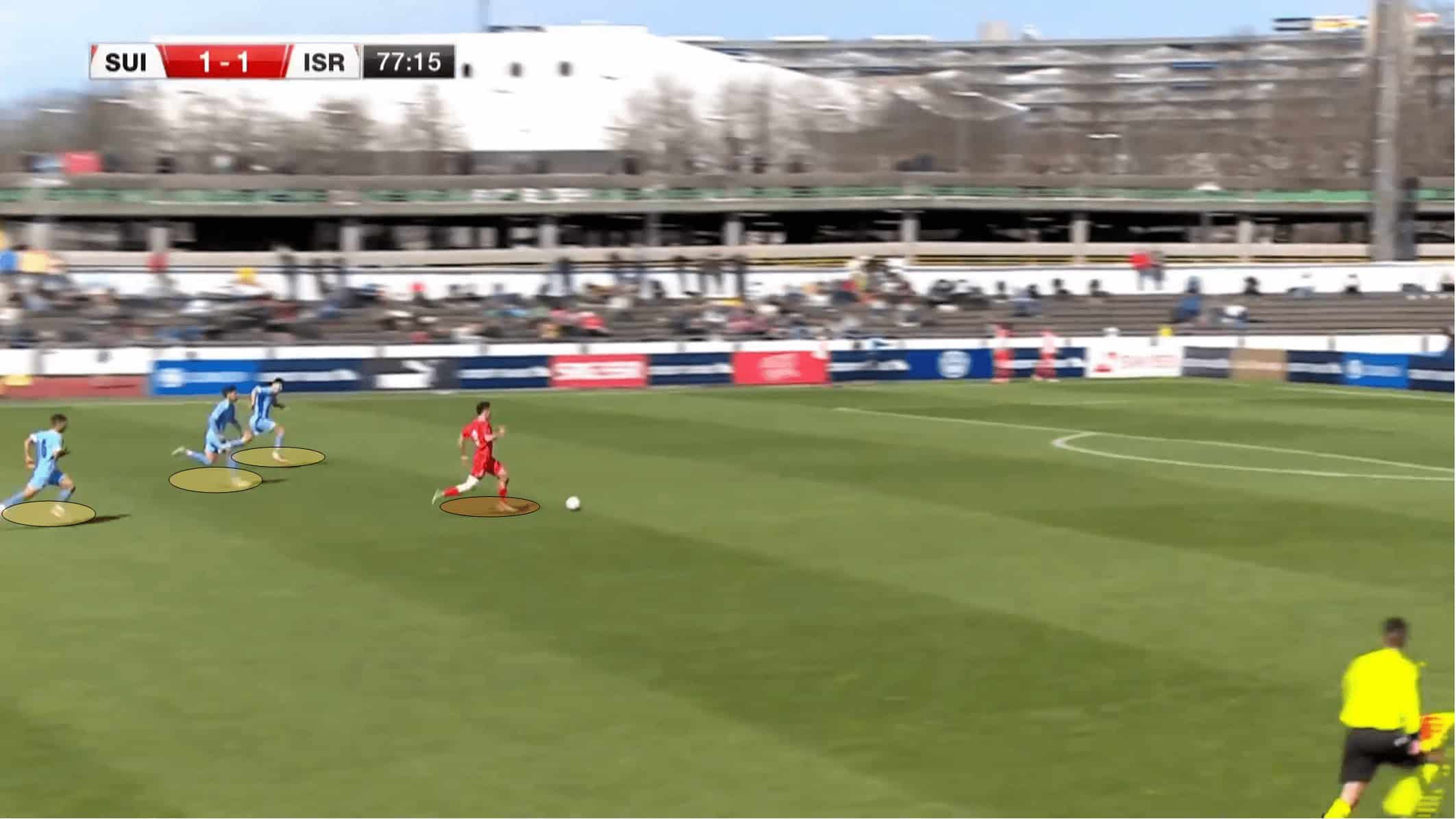
On the offensive transition, the Israelis typically seek the attacking depth of their two strikers or even the free space reserved for the fullbacks.
However, this link wasn’t successfully accomplished most of the time due to Israel’s passing inefficiency at this stage. Yet, as they aren’t a swift team, normally when they recover the ball, they rather try to maintain possession through a fluid ball circulation between the different sectors.
Defenders
The three expected players that are going to perform as centre-back, as we previously mentioned, are Lemkin, Gandelman and Cohen. With some caps in the first national team, Gandelman is the most developed defender of this Israeli collective. In fact, he is normally used to playing as a defensive midfielder, but Luzon seems to like his performances as a centre-back. Or Blorian, the debutant Ofir Benvenisti and the versatile Roy Revivo are the other likely options at centre-back.
Regarding the fullbacks, firstly, we have the 22-year-old Karm Jaber (right back) who currently plays in the top Israeli tier. Roey Elimelech and Roy Herman are both options for the right corridor, where the first one is more technical but the second is more physical. The left flank is most likely occupied by the 21-year-old Ilay Hagag who can perform also as a midfielder or as a winger, however, Revivo can also perform there.
Midfielders
The most defensive element of the three midfielders is normally played by Yoav Hofmayster a promising 22-year-old who plays in the Israeli first tier with Ironi Kiryat Shmona. However, if the youngster Kancepolsky was chosen to play instead it wouldn’t be a surprise due to his quality. The two centre midfielder spots are very likely to be occupied by two of the most relevant player of this collective: Ido Shahar and Arad Bar. The youngster Azoulay and Yuval Sade are other alternatives for this position. Both Mohamad Kanaan and Eden Karzev are currently injured and are most likely to miss the European Championships.
Attackers
Dor Turgeman, currently playing for Maccabi Tel Aviv, is the attacker with the highest probability of starting. Then we have the 22-year-old Osher Davida who is an enthusiastic promise at Standard de Liège and who usually plays more on the right side of the attack. The left-footed technician Oz Bilu is the third option in attack, yet he can also play as a midfielder. Additionally, Hapoel Haifa’s Itay Boganim and the 22-year-old Hisham Layous are other options for Guy Luzon. It’s also important to note that Suf Podgoreanu is injured and will probably not play in this tournament.
Key Player
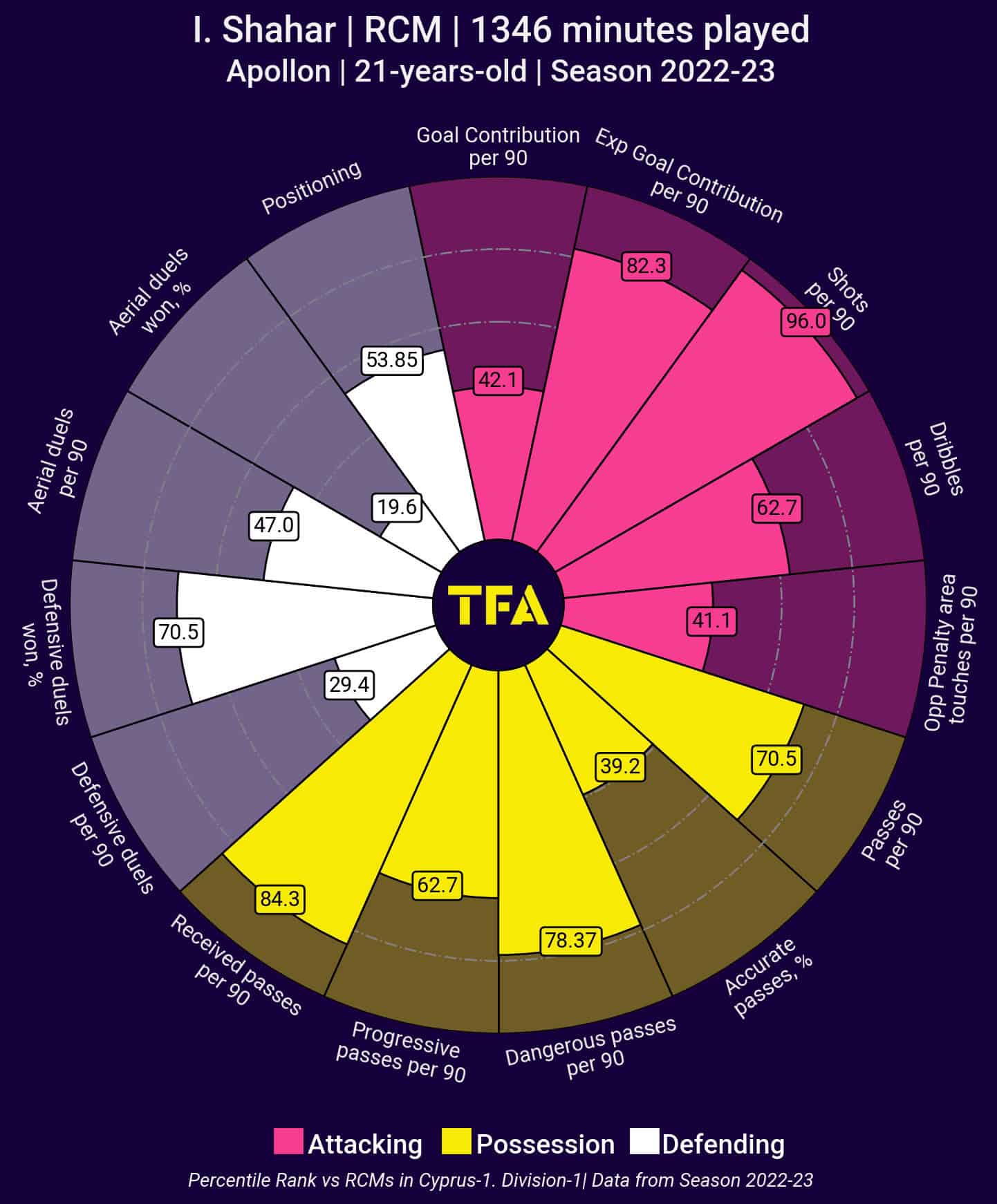
In our view, Ido Shahar is the key player of this team mainly due to the single fact that he is a player that can decide a game from nothing. A box-to-box player who is influential both by being low on the field, supporting the build-up, and also by being involved in the offensive process, reaching the opposition’s box.
One piece of evidence that possibly shows Shahar’s influence in offensive organisation and as we mentioned in their build-up, is the 84.3 percentile rank in received passes per 90 minutes. Besides that, concerning the final third of the pitch, Ido stands in the 78.37 percentile in dangerous passes per 90 minutes and in the 96th percentile regarding shots per 90 minutes.
Regarding his defensive impact, the Israeli midfielder does not expose himself that much, ranking in the 29.4 percentile for defensive duels per 90. However, he is strong and clinical in the duel, having a 70.5% success rate. Besides that, his physique is not very helpful in the aerial game, and as the data reveals, Shahar ranks in the 47th percentile, with a poor success rate.
Tournament prediction
In a very difficult group, we find it very tough for Israel to pass on to the next phase. However, in football, everything can happen, and if this collective stays organised against these much stronger sides, they increase their chances to pass.
If Israel take advantage of Bar’s good positioning, Shahar’s creativity, Hofmayster’s aggressiveness and Lemskin’s intelligence in build-up, there are chances of them pulling off a surprise in their group.
Besides that, they are a versatile team that can adapt to different situations of the game, where, for instance, they also feel comfortable playing a more direct game. On the other hand, the calendar does not play into their favour, since the two theoretically more difficult opponents are the first ones that Israel will face.
On the whole, Israel are an enthusiastic team that have quality in their processes and, most importantly, practice their own identity. However, for them to pass on to the next phase they will need luck and a team playing at their maximum level in every aspect — in other words, a team with a narrow margin for error.

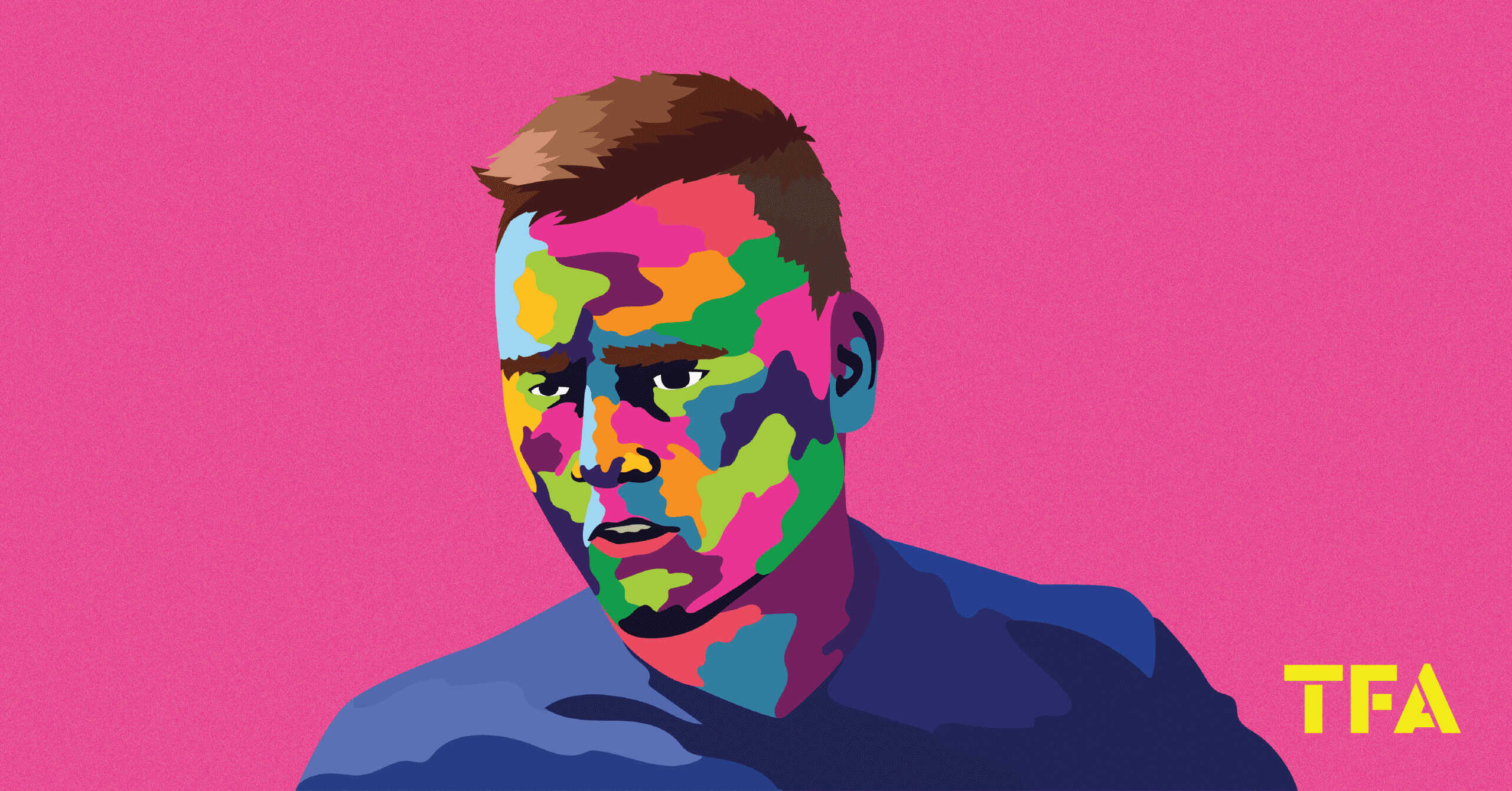




Comments